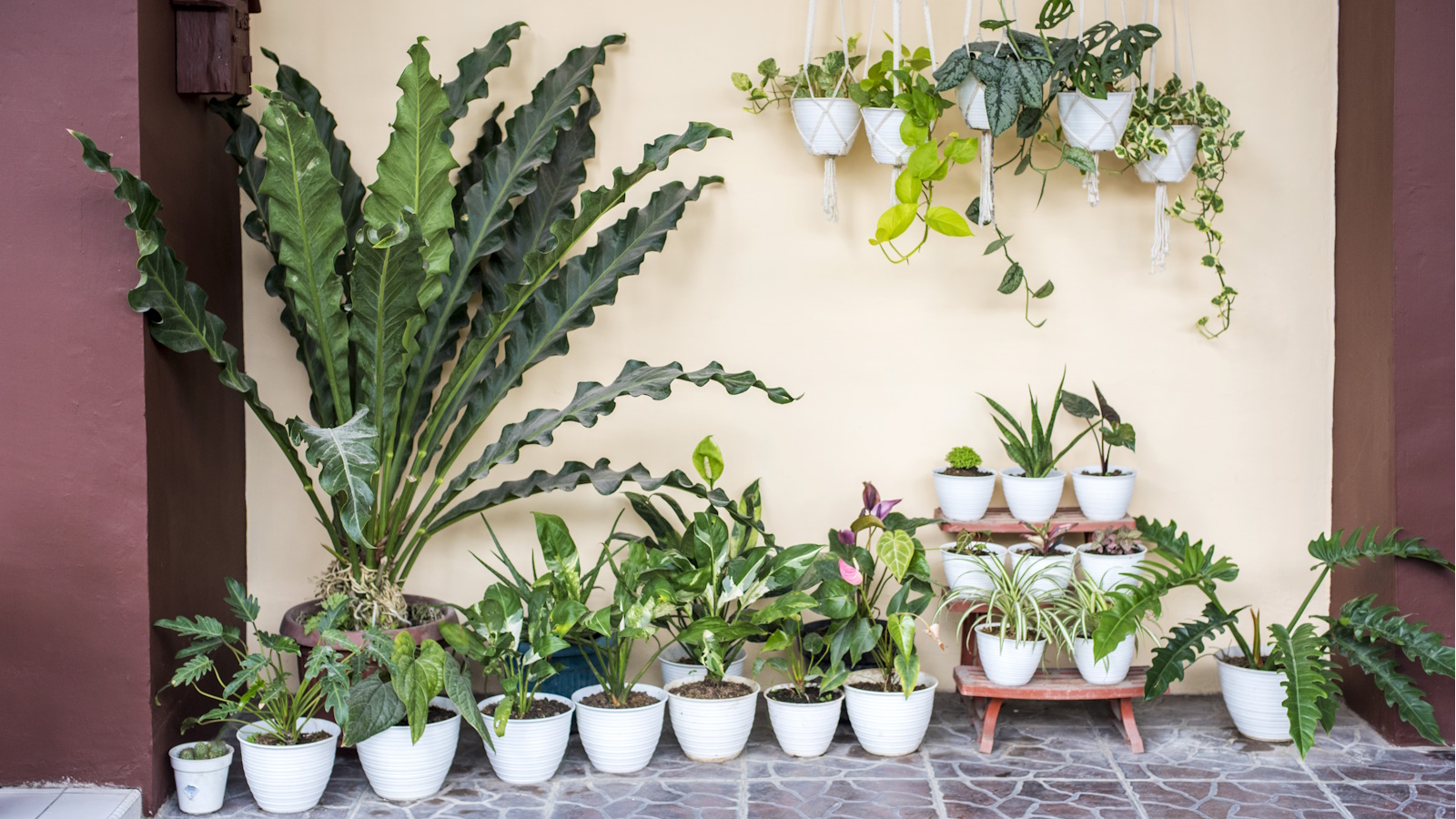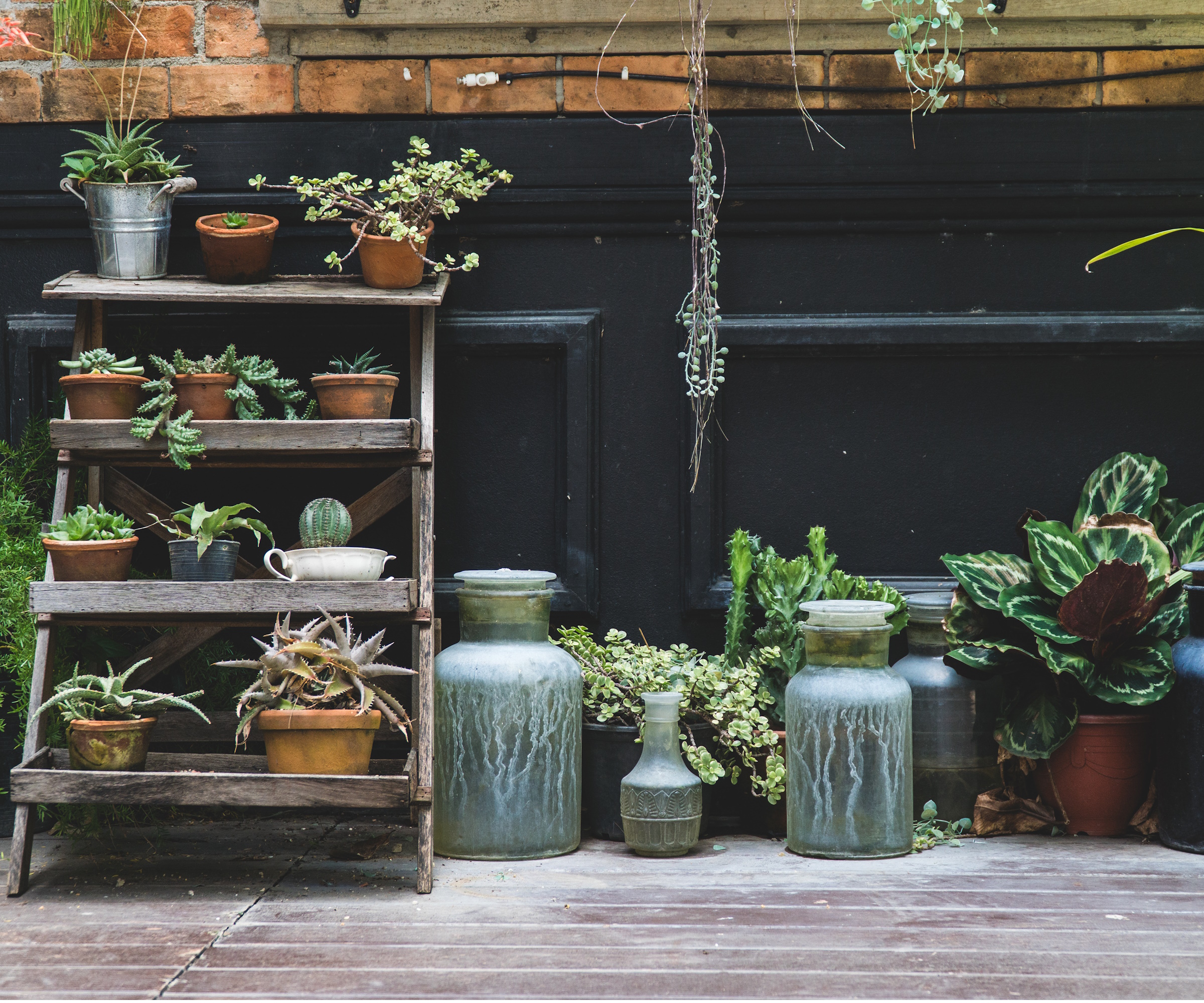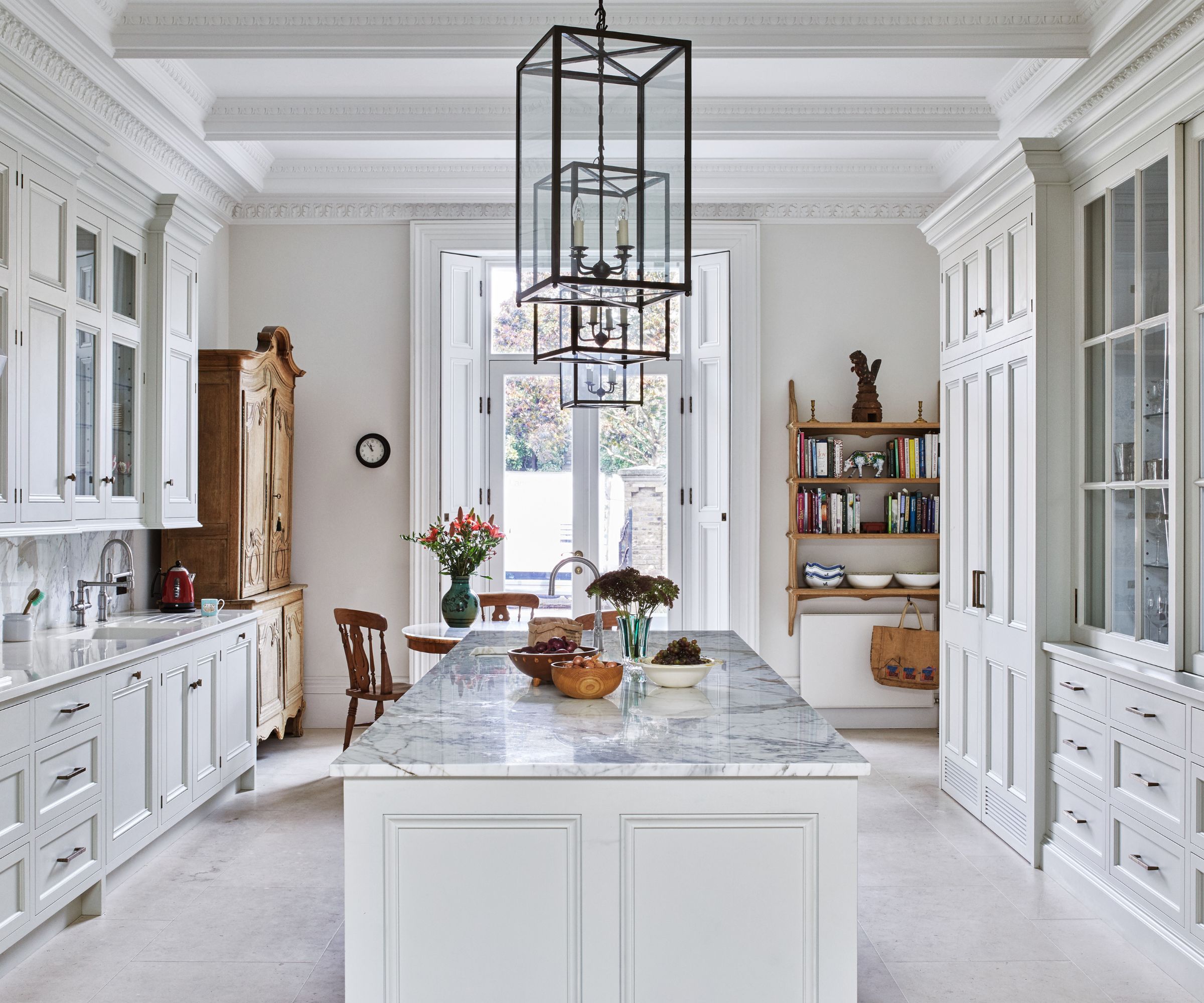Plant experts are encouraging us to move houseplants outdoors this summer – discover why yours can benefit from some fresh air
Letting your houseplants soak up the warm weather can bring many benefits for their health and growth


As the weather warms up, it's usual to see your houseplants grow and thrive. They've maintained health during the dark and cold months and have now entered an active growth phase.
When it comes to summer houseplant care, it's important to nurture your indoor plants as they start to have a burst of growth. Moving houseplants outdoors can help with this, offering them a chance to soak up the sun and benefit from more air circulation.
We've spoken to experts to find out why you should give your plants some fresh air, and when is the best time to move houseplants outdoors.
Why should you move houseplants outdoors?

There are several benefits of moving your houseplants outdoors when it gets warmer.
'Your plants will photosynthesize more and grow faster in increased sunlight outdoors,' says Vladan Nikolic from Mr. Houseplant. 'They will also get fresh air, increased airflow and humidity,' he adds.
Common indoor plant mistakes include not providing plants with sufficient light, which is why grow lights, like this grow light from Amazon, are popular. Unless you have indoor low light plants, you will notice your houseplants droop and discolor from a lack of natural light. That's why moving them outdoors can boost their exposure to sunlight.
Likewise, air circulation is important to ensure you plants don't remain damp and develop issues with pests and diseases or houseplant root rot.
'Rain also reduces the watering frequency and keeps the foliage clean and dust-free,' Vladan adds.
It's a known fact that houseplants reduce dust by capturing it on their foliage. While this doesn't harm the plants, it can dull their appearance. Rainwater can help clean houseplant leaves and keep your plants looking bright. You can also use a soft cloth, like these microfibre cloths from Walmart, to help wipe leaves.
'Rainwater is wonderful for plants, and it contains nitrogen, so this is why you'll often notice that plants green up after a good rain,' notes Raffaele Di Lallo plant expert from Ohio Tropics.

Vladan Nikolic is a houseplant expert with over 10 years of experience. He is the founder of the houseplant care blog Mr. Houseplant and is a social media influencer for houseplants with over 500,000 followers.

Raffaele Di Lallo is the founder of the blog Ohio Tropics which focuses on the care of houseplants and other tropical plants, both indoors and outdoors. He has a large following on Instagram where he gives plant care tips and is the author of Houseplant Warrior: 7 Keys to Unlocking the Mysteries of Houseplant Care, published by Countryman Press.
When to move houseplants outdoors

Although an outdoor environment can bring many benefits to houseplants, it's important to not move them outdoors too early.
'The best time to move your houseplants to the great outdoors is between late spring and early summer,' says Sally Allsop, founder of All That Grows.
'By May or June, the risk of frost has generally passed so this will allow you to gradually introduce your plants to the warmer conditions outside,' she adds.
It's best to avoid placing your indoor plants outside when there is still a risk of late frosts, as this could cause damage to their health and even kill them off. Even if you have cold-tolerant houseplants, late frosts can cause foliage to droop and cause roots to freeze.
'Gradual acclimation is key, as it prevents wilting, discolouration or other stress reactions,' notes Sally.
This includes placing your houseplants outside for just a few hours a day and choosing spots with garden shade to help them climatize to outdoors temperatures and conditions.
'It also depends on the plant species and hardiness,' says Vladan Nikolic. 'Tropical indoor plants, like alocasia or clivia, should be moved outside when the night temperatures are consistently higher than 50- 54°F. Philodendron, peace lily and snake plant can be put outside when the temperatures are above 55°F, whereas prayer plants and calathea need temperatures higher than 59°F,' he suggests.
It's best to do some research around your US hardiness zone and the temperatures your houseplant requires before bringing it outdoors. Using an outdoor thermometer, like this outdoor thermometer from Amazon, can help you monitor temperatures.

Sally is an avid gardener and founder of the online gardening site All That Grows. She has many years of hands-on gardening experience and a thirst of knowledge about plants and their needs. Sally is passionate about sharing her love for gardening and sharing tips with other gardeners.
FAQs
Can houseplants cope with extreme outdoor weather?
Moving houseplants outdoors for summer can bring a whole host of benefits for their health and growth, but the extreme weather they can handle will depend on their species and optimal growing conditions.
For plants that can handle direct sunlight, experts recommend gradually exposing them to sunlight to prevent damage to foliage. 'Start with 1-2 hours of direct sunlight exposure early in the morning, or late in the afternoon and gradually prolong the exposure,' says Vladan Nikolic from Mr. Houseplant.
It's best to protect indoor plants from strong winds that could damage and break foliage, and likewise bring them indoors if there are still late frosts present to prevent roots freezing.
How do you protect houseplants from pests when your bring them back inside?
It's likely that houseplants will pick up pests when you move them outdoors. Common houseplant pests that are likely to come back inside with your plants include mealybugs, aphids, thrips and more. You can stop pests coming back inside with houseplants by checking the soil thoroughly, rinsing the foliage and keeping them away from other plants for a few weeks so that pests don't spread.
Knowing when to move houseplants outdoors is important so that your indoor plants can benefit from the warmer weather without a risk of damage.
If you're looking for ways to style your houseplants outdoors, why not try making an outdoor table centerpiece?
Sign up to the Homes & Gardens newsletter
Design expertise in your inbox – from inspiring decorating ideas and beautiful celebrity homes to practical gardening advice and shopping round-ups.

Tenielle is a Gardens News Writer at Homes & Gardens. She holds a qualification in MA Magazine Journalism and has over six years of journalistic experience. Before coming to Homes & Gardens, Tenielle was in the editorial department at the Royal Horticultural Society and worked on The Garden magazine. As our in-house houseplant expert, Tenielle writes on a range of solutions to houseplant problems, as well as other 'how to' guides, inspiring garden projects, and the latest gardening news. When she isn't writing, Tenielle can be found propagating her ever-growing collection of indoor plants, helping others overcome common houseplant pests and diseases, volunteering at a local gardening club, and attending gardening workshops, like a composting masterclass.
-
 Are you making the most out of the estate sales in your area? These are the 5 most valuable items you should be shopping for
Are you making the most out of the estate sales in your area? These are the 5 most valuable items you should be shopping forVintage lovers and antique experts share the objects you should always look out for when you're exploring an estate sale
By Eleanor Richardson
-
 How to grow sassafras – for a low-maintenance native tree that can even be planted in shady yards
How to grow sassafras – for a low-maintenance native tree that can even be planted in shady yardsFor an easy-to-grow North American tree, you will not find much better than sassafras
By Thomas Rutter